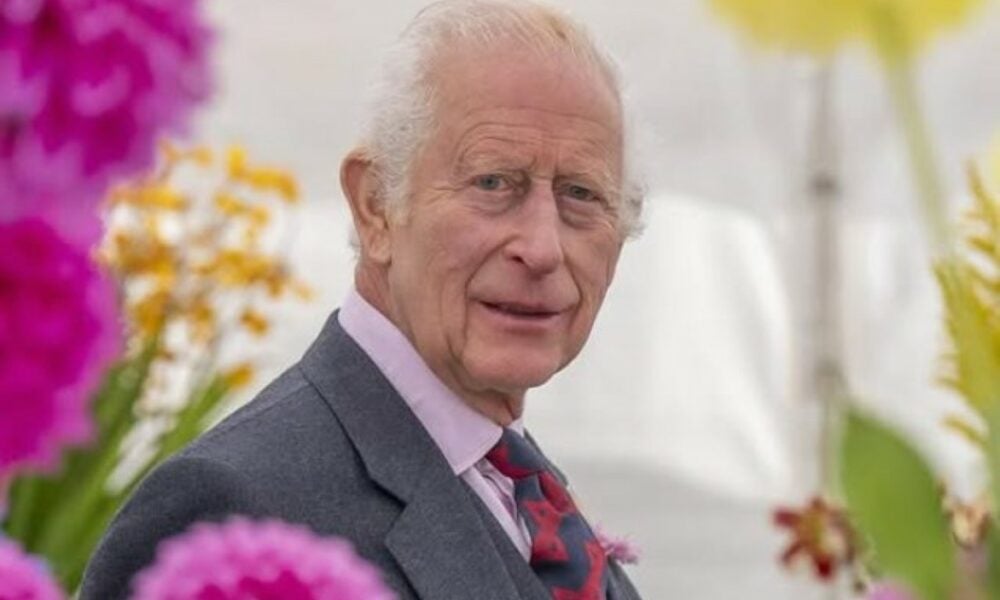At 76, King Charles III faces a worsening cancer fight, diagnosed in February 2024, pushing the British monarchy into rapid succession planning. With no remission in sight, the king, who ascended the throne in September 2022 following Queen Elizabeth II’s death, has seen his public duties drop from over 200 in 2024 to fewer than 50 in 2025. This health crisis shifts the burden to Prince William, 42, and Kate Middleton, also 42, who are stepping up amid their own challenges to ensure the Crown’s stability across the United Kingdom and its 56 Commonwealth nations.
William has taken on 80% of his father’s royal tasks in 2025, handling over 150 engagements in 2024, including the Notre-Dame Cathedral reopening in Paris. Kate, diagnosed with cancer in January 2024, scaled back from 120 appearances in 2023 to 40 in 2024, but plans 20 for 2025, focusing on early childhood education. Together, they’ve raised £50 million for charity in 2024, boosting their public approval to 75%, compared to Charles’s 50%, as they train intensively for leadership roles.
Charles’s condition, detected after a benign prostate procedure, has reshaped royal dynamics. As speculation about abdication grows, the monarchy, contributing £1.8 billion yearly to the UK economy, prepares for a historic transition. William and Kate stand as key players, blending tradition with modernization to secure the Crown’s future in a time of uncertainty.

Charles III’s health shakes the monarchy
Diagnosed with cancer in February 2024 after a prostate treatment, King Charles III’s condition has deteriorated through 2025, though Buckingham Palace keeps the cancer type under wraps. His public role shrank significantly, from over 200 engagements in 2024, including 25 international trips, to fewer than 50 this year, with under 10 overseas visits, as medical care takes priority. This decline has raised alarms within the royal family, accelerating succession plans.
Prince William has become the monarchy’s frontline figure, managing 80% of his father’s duties in 2025. In 2024, he attended over 150 events, such as the Notre-Dame reopening, and raised £20 million for mental health projects, proving his readiness for the throne. The king’s reduced capacity has fueled abdication rumors, a rare move last seen in 1936 with Edward VIII, adding urgency to William’s role.
Kate Middleton, battling cancer since January 2024 after abdominal surgery, remains a vital part despite her limited schedule. Her 120 engagements in 2023 fell to 40 in 2024, with 20 planned for 2025, targeting education initiatives that aided 2 million children last year. The couple’s resilience has lifted their approval by 10% since 2023, reaching 75%, a critical asset amid the royal health crisis.
- Charles III: From 200 engagements in 2024 to under 50 in 2025.
- William: 80% of royal duties in 2025, with 150 events in 2024.
- Kate: From 120 appearances in 2023 to 40 in 2024, aiming for 20 in 2025.
William and Kate prepare for the throne
Intensive training is underway for William and Kate as they gear up for leadership. In 2025, William conducted over 20 foreign policy briefings and led 10 international trips, while managing royal estates like the Duchy of Cornwall, which generates £20 million annually. His 2024 efforts reached 5 million people through mental health and sustainability projects, cementing his public stature.
Kate, despite her health struggles, focuses on social causes. Her early childhood initiatives raised £10 million in 2024, with plans to resume 60 engagements in 2025 after 40 last year. Their combined approval rating of 75%, against Charles’s 50%, reflects their appeal, with 70% of Britons viewing them as “relevant” compared to 55% for the king, per recent surveys.
Modernization is central to their approach. The monarchy adds £1.8 billion to the UK economy, including £500 million from tourism in 2024, but its £100 million annual cost draws criticism. William and Kate counter this with impactful charity work, boosting their image as forward-thinking leaders ready to adapt the Crown to contemporary needs.
Health crisis alters royal duties
Charles’s cancer, uncovered in 2024 post-prostate surgery, has curtailed his reign. His 25 international trips in 2023 dropped to fewer than 10 in 2024, and his 200 annual engagements fell to under 50 in 2025, with treatments dominating his schedule in London. This shift has thrust William into the spotlight, handling 80% of royal tasks this year.
Kate’s cancer, diagnosed in January 2024, slashed her 120 engagements in 2023 to 40 in 2024, though she aims for 20 in 2025, emphasizing education. Their mutual support amid personal trials has raised their approval by 10% to 75% since 2023. In 2024, William’s charity efforts netted £20 million, while Kate’s projects supported 2 million children, showcasing their strength.
The dual health crises underscore the succession’s urgency. As Charles prioritizes recovery, William and Kate ensure a smooth transition, potentially the first in 70 years, maintaining the monarchy’s stability through a blend of duty and resilience.
Succession line takes center stage
With Charles’s health faltering, the succession hierarchy sharpens. Prince William, first in line, will ascend if Charles steps down or passes. Kate Middleton becomes Queen Consort, bolstering his reign. Prince George, 11, steps into the heir’s role, followed by Princess Charlotte, 9, and Prince Louis, 6. Prince Harry, distanced from royal duties, holds fifth place, trailed by Archie and Lilibet.
William’s 80% takeover of Charles’s duties in 2025 includes 10 overseas trips, while George joined five public events in 2024, like school visits, to learn royal protocols. Kate, with 15 appearances in 2024 despite illness, plans 20 in 2025, reinforcing her role. The next generation is being groomed, with George’s early exposure signaling long-term planning.
The succession’s clarity is vital. William’s leadership in diplomacy and estate management, paired with Kate’s focus on education, prepares them for a reign that could begin sooner than expected, ensuring continuity amid Charles’s uncertain tenure.
Modern monarchy under pressure
The impending transition unfolds as the monarchy’s relevance is tested. Of the 56 Commonwealth nations, 14 retain the monarch as head of state, but republicanism gains traction—Barbados severed ties in 2021, and 10 others eye referendums by 2030. The Crown’s £100 million yearly cost faces scrutiny, with 40% of Britons doubting its worth in 2024, despite its £1.8 billion economic contribution.
William and Kate tackle this with modernization. Their 2024 initiatives reached 5 million people, raising £50 million, and their 75% approval outpaces Charles’s 50%, down from 65% in 2023 due to his health. Six Commonwealth nations debate breaking away in 2025, but the couple’s 20% higher approval could sustain these bonds.
Public perception is shifting. While 70% see William and Kate as “current,” against 55% for Charles, the monarchy strives to balance tradition with a society questioning its role, making their leadership pivotal for its survival.
Key moments in royal history
Past transitions frame today’s shift:
- 1936: Edward VIII abdicates for Wallis Simpson, crowning George VI.
- 1952: George VI’s death elevates Elizabeth II at 25, reigning 70 years.
- 2022: Elizabeth II’s passing crowns Charles III at 73.
Charles, the oldest to ascend, may have the briefest reign since Edward VIII, with his health hastening William’s rise, marking a new chapter in under three years.
Economic role of the monarchy
The Crown injects £1.8 billion into the UK economy annually, with £500 million from tourism in 2024, driven by palaces and ceremonies. The Duchy of Cornwall, under William’s stewardship, yielded £20 million last year, funding royal activities. Yet, its £100 million cost sparks debate, with 40% of Britons questioning its value in 2024.
William and Kate enhance this impact. Their 2024 campaigns raised £50 million, aiding 5 million people, and boosted tourism through public events. Their 75% approval, versus Charles’s 50%, underscores their ability to justify the monarchy’s economic footprint through modern engagement.
Strength of William and Kate
Facing Kate’s cancer, diagnosed in 2024, her 120 engagements in 2023 fell to 40 last year, with 20 planned for 2025, targeting childhood education. William, with 150 events in 2024 and 80% of Charles’s duties in 2025, led 10 international trips. Their £20 million raised for mental health in 2024 lifted their approval by 10% to 75% since 2023.
Their resilience shines. Kate supported 2 million children in 2024, while William reached 5 million with sustainability efforts, proving they can lead the monarchy through personal and institutional challenges with unwavering commitment.
Commonwealth at a crossroads
Of the Commonwealth’s 2.5 billion citizens, 14 nations still recognize the monarch as head of state, but change looms. Barbados exited in 2021, and six countries plan 2025 debates. William and Kate’s 75% approval, 20% above the royal average, may slow this tide, though 10 referendums by 2030 loom large.
William’s 10 Commonwealth trips in 2025 strengthen cultural ties, while Kate’s 15 events in 2024, despite illness, focus on education. Their popularity contrasts with Charles’s 50% rating, suggesting modernization could preserve the 56-nation bloc.
Fascinating transition details
Notable aspects mark this shift:
- Charles III: Oldest to take the throne at 73 in 2022.
- William: Handles 80% of duties in 2025, with 150 events in 2024.
- Kate: Plans 20 engagements in 2025 after 40 in 2024, despite cancer.
These elements highlight how health has fast-tracked a succession that might have taken decades, testing the monarchy’s adaptability.
Gearing up for the future
As Charles undergoes intensive care, William and Kate take the reins. His 10 international trips and her 20 planned 2025 engagements signal a handover in progress. Their 75% approval and £50 million raised in 2024 offset the Crown’s £100 million cost with £1.8 billion in benefits, securing its economic role.
The first succession in 70 years challenges the monarchy. With six Commonwealth nations debating their future in 2025, William and Kate’s 20% higher approval bridges tradition and modernity, steering the Crown toward stability in a pivotal reign.

At 76, King Charles III faces a worsening cancer fight, diagnosed in February 2024, pushing the British monarchy into rapid succession planning. With no remission in sight, the king, who ascended the throne in September 2022 following Queen Elizabeth II’s death, has seen his public duties drop from over 200 in 2024 to fewer than 50 in 2025. This health crisis shifts the burden to Prince William, 42, and Kate Middleton, also 42, who are stepping up amid their own challenges to ensure the Crown’s stability across the United Kingdom and its 56 Commonwealth nations.
William has taken on 80% of his father’s royal tasks in 2025, handling over 150 engagements in 2024, including the Notre-Dame Cathedral reopening in Paris. Kate, diagnosed with cancer in January 2024, scaled back from 120 appearances in 2023 to 40 in 2024, but plans 20 for 2025, focusing on early childhood education. Together, they’ve raised £50 million for charity in 2024, boosting their public approval to 75%, compared to Charles’s 50%, as they train intensively for leadership roles.
Charles’s condition, detected after a benign prostate procedure, has reshaped royal dynamics. As speculation about abdication grows, the monarchy, contributing £1.8 billion yearly to the UK economy, prepares for a historic transition. William and Kate stand as key players, blending tradition with modernization to secure the Crown’s future in a time of uncertainty.

Charles III’s health shakes the monarchy
Diagnosed with cancer in February 2024 after a prostate treatment, King Charles III’s condition has deteriorated through 2025, though Buckingham Palace keeps the cancer type under wraps. His public role shrank significantly, from over 200 engagements in 2024, including 25 international trips, to fewer than 50 this year, with under 10 overseas visits, as medical care takes priority. This decline has raised alarms within the royal family, accelerating succession plans.
Prince William has become the monarchy’s frontline figure, managing 80% of his father’s duties in 2025. In 2024, he attended over 150 events, such as the Notre-Dame reopening, and raised £20 million for mental health projects, proving his readiness for the throne. The king’s reduced capacity has fueled abdication rumors, a rare move last seen in 1936 with Edward VIII, adding urgency to William’s role.
Kate Middleton, battling cancer since January 2024 after abdominal surgery, remains a vital part despite her limited schedule. Her 120 engagements in 2023 fell to 40 in 2024, with 20 planned for 2025, targeting education initiatives that aided 2 million children last year. The couple’s resilience has lifted their approval by 10% since 2023, reaching 75%, a critical asset amid the royal health crisis.
- Charles III: From 200 engagements in 2024 to under 50 in 2025.
- William: 80% of royal duties in 2025, with 150 events in 2024.
- Kate: From 120 appearances in 2023 to 40 in 2024, aiming for 20 in 2025.
William and Kate prepare for the throne
Intensive training is underway for William and Kate as they gear up for leadership. In 2025, William conducted over 20 foreign policy briefings and led 10 international trips, while managing royal estates like the Duchy of Cornwall, which generates £20 million annually. His 2024 efforts reached 5 million people through mental health and sustainability projects, cementing his public stature.
Kate, despite her health struggles, focuses on social causes. Her early childhood initiatives raised £10 million in 2024, with plans to resume 60 engagements in 2025 after 40 last year. Their combined approval rating of 75%, against Charles’s 50%, reflects their appeal, with 70% of Britons viewing them as “relevant” compared to 55% for the king, per recent surveys.
Modernization is central to their approach. The monarchy adds £1.8 billion to the UK economy, including £500 million from tourism in 2024, but its £100 million annual cost draws criticism. William and Kate counter this with impactful charity work, boosting their image as forward-thinking leaders ready to adapt the Crown to contemporary needs.
Health crisis alters royal duties
Charles’s cancer, uncovered in 2024 post-prostate surgery, has curtailed his reign. His 25 international trips in 2023 dropped to fewer than 10 in 2024, and his 200 annual engagements fell to under 50 in 2025, with treatments dominating his schedule in London. This shift has thrust William into the spotlight, handling 80% of royal tasks this year.
Kate’s cancer, diagnosed in January 2024, slashed her 120 engagements in 2023 to 40 in 2024, though she aims for 20 in 2025, emphasizing education. Their mutual support amid personal trials has raised their approval by 10% to 75% since 2023. In 2024, William’s charity efforts netted £20 million, while Kate’s projects supported 2 million children, showcasing their strength.
The dual health crises underscore the succession’s urgency. As Charles prioritizes recovery, William and Kate ensure a smooth transition, potentially the first in 70 years, maintaining the monarchy’s stability through a blend of duty and resilience.
Succession line takes center stage
With Charles’s health faltering, the succession hierarchy sharpens. Prince William, first in line, will ascend if Charles steps down or passes. Kate Middleton becomes Queen Consort, bolstering his reign. Prince George, 11, steps into the heir’s role, followed by Princess Charlotte, 9, and Prince Louis, 6. Prince Harry, distanced from royal duties, holds fifth place, trailed by Archie and Lilibet.
William’s 80% takeover of Charles’s duties in 2025 includes 10 overseas trips, while George joined five public events in 2024, like school visits, to learn royal protocols. Kate, with 15 appearances in 2024 despite illness, plans 20 in 2025, reinforcing her role. The next generation is being groomed, with George’s early exposure signaling long-term planning.
The succession’s clarity is vital. William’s leadership in diplomacy and estate management, paired with Kate’s focus on education, prepares them for a reign that could begin sooner than expected, ensuring continuity amid Charles’s uncertain tenure.
Modern monarchy under pressure
The impending transition unfolds as the monarchy’s relevance is tested. Of the 56 Commonwealth nations, 14 retain the monarch as head of state, but republicanism gains traction—Barbados severed ties in 2021, and 10 others eye referendums by 2030. The Crown’s £100 million yearly cost faces scrutiny, with 40% of Britons doubting its worth in 2024, despite its £1.8 billion economic contribution.
William and Kate tackle this with modernization. Their 2024 initiatives reached 5 million people, raising £50 million, and their 75% approval outpaces Charles’s 50%, down from 65% in 2023 due to his health. Six Commonwealth nations debate breaking away in 2025, but the couple’s 20% higher approval could sustain these bonds.
Public perception is shifting. While 70% see William and Kate as “current,” against 55% for Charles, the monarchy strives to balance tradition with a society questioning its role, making their leadership pivotal for its survival.
Key moments in royal history
Past transitions frame today’s shift:
- 1936: Edward VIII abdicates for Wallis Simpson, crowning George VI.
- 1952: George VI’s death elevates Elizabeth II at 25, reigning 70 years.
- 2022: Elizabeth II’s passing crowns Charles III at 73.
Charles, the oldest to ascend, may have the briefest reign since Edward VIII, with his health hastening William’s rise, marking a new chapter in under three years.
Economic role of the monarchy
The Crown injects £1.8 billion into the UK economy annually, with £500 million from tourism in 2024, driven by palaces and ceremonies. The Duchy of Cornwall, under William’s stewardship, yielded £20 million last year, funding royal activities. Yet, its £100 million cost sparks debate, with 40% of Britons questioning its value in 2024.
William and Kate enhance this impact. Their 2024 campaigns raised £50 million, aiding 5 million people, and boosted tourism through public events. Their 75% approval, versus Charles’s 50%, underscores their ability to justify the monarchy’s economic footprint through modern engagement.
Strength of William and Kate
Facing Kate’s cancer, diagnosed in 2024, her 120 engagements in 2023 fell to 40 last year, with 20 planned for 2025, targeting childhood education. William, with 150 events in 2024 and 80% of Charles’s duties in 2025, led 10 international trips. Their £20 million raised for mental health in 2024 lifted their approval by 10% to 75% since 2023.
Their resilience shines. Kate supported 2 million children in 2024, while William reached 5 million with sustainability efforts, proving they can lead the monarchy through personal and institutional challenges with unwavering commitment.
Commonwealth at a crossroads
Of the Commonwealth’s 2.5 billion citizens, 14 nations still recognize the monarch as head of state, but change looms. Barbados exited in 2021, and six countries plan 2025 debates. William and Kate’s 75% approval, 20% above the royal average, may slow this tide, though 10 referendums by 2030 loom large.
William’s 10 Commonwealth trips in 2025 strengthen cultural ties, while Kate’s 15 events in 2024, despite illness, focus on education. Their popularity contrasts with Charles’s 50% rating, suggesting modernization could preserve the 56-nation bloc.
Fascinating transition details
Notable aspects mark this shift:
- Charles III: Oldest to take the throne at 73 in 2022.
- William: Handles 80% of duties in 2025, with 150 events in 2024.
- Kate: Plans 20 engagements in 2025 after 40 in 2024, despite cancer.
These elements highlight how health has fast-tracked a succession that might have taken decades, testing the monarchy’s adaptability.
Gearing up for the future
As Charles undergoes intensive care, William and Kate take the reins. His 10 international trips and her 20 planned 2025 engagements signal a handover in progress. Their 75% approval and £50 million raised in 2024 offset the Crown’s £100 million cost with £1.8 billion in benefits, securing its economic role.
The first succession in 70 years challenges the monarchy. With six Commonwealth nations debating their future in 2025, William and Kate’s 20% higher approval bridges tradition and modernity, steering the Crown toward stability in a pivotal reign.







